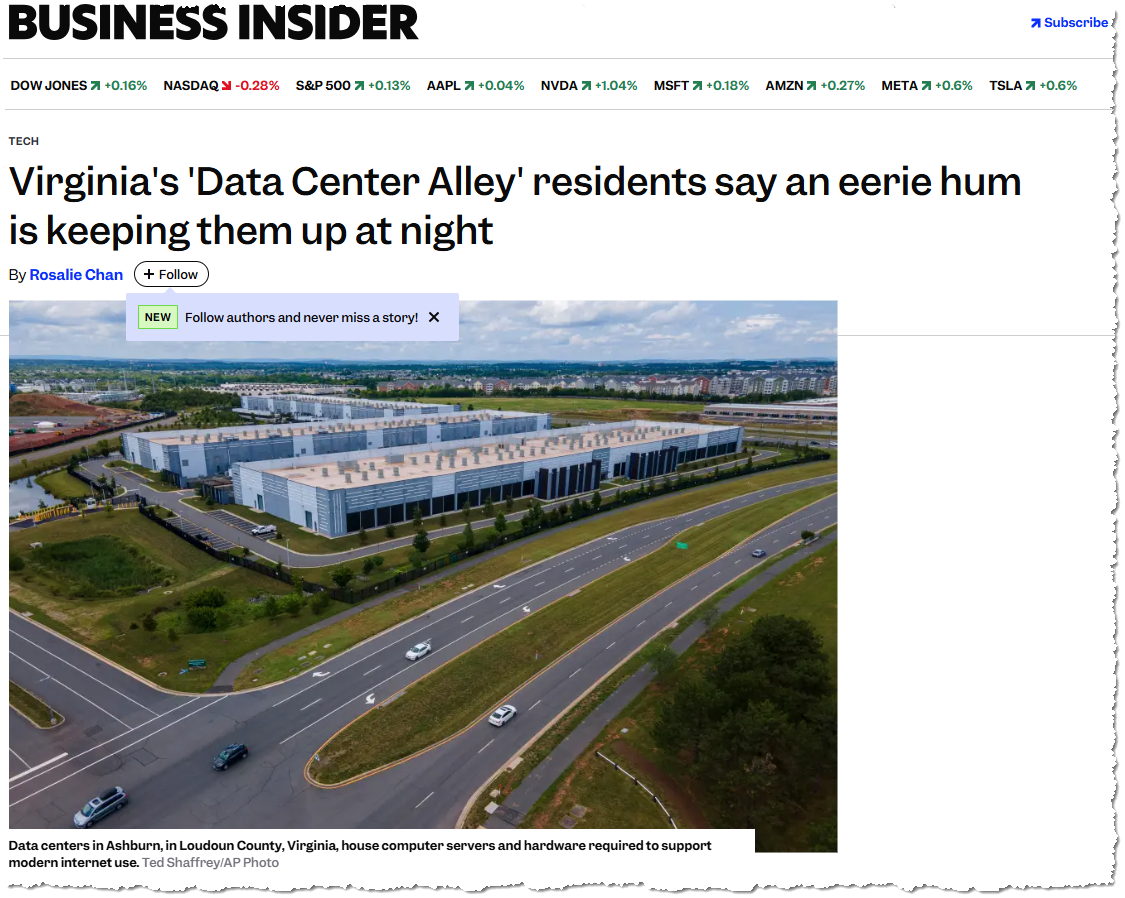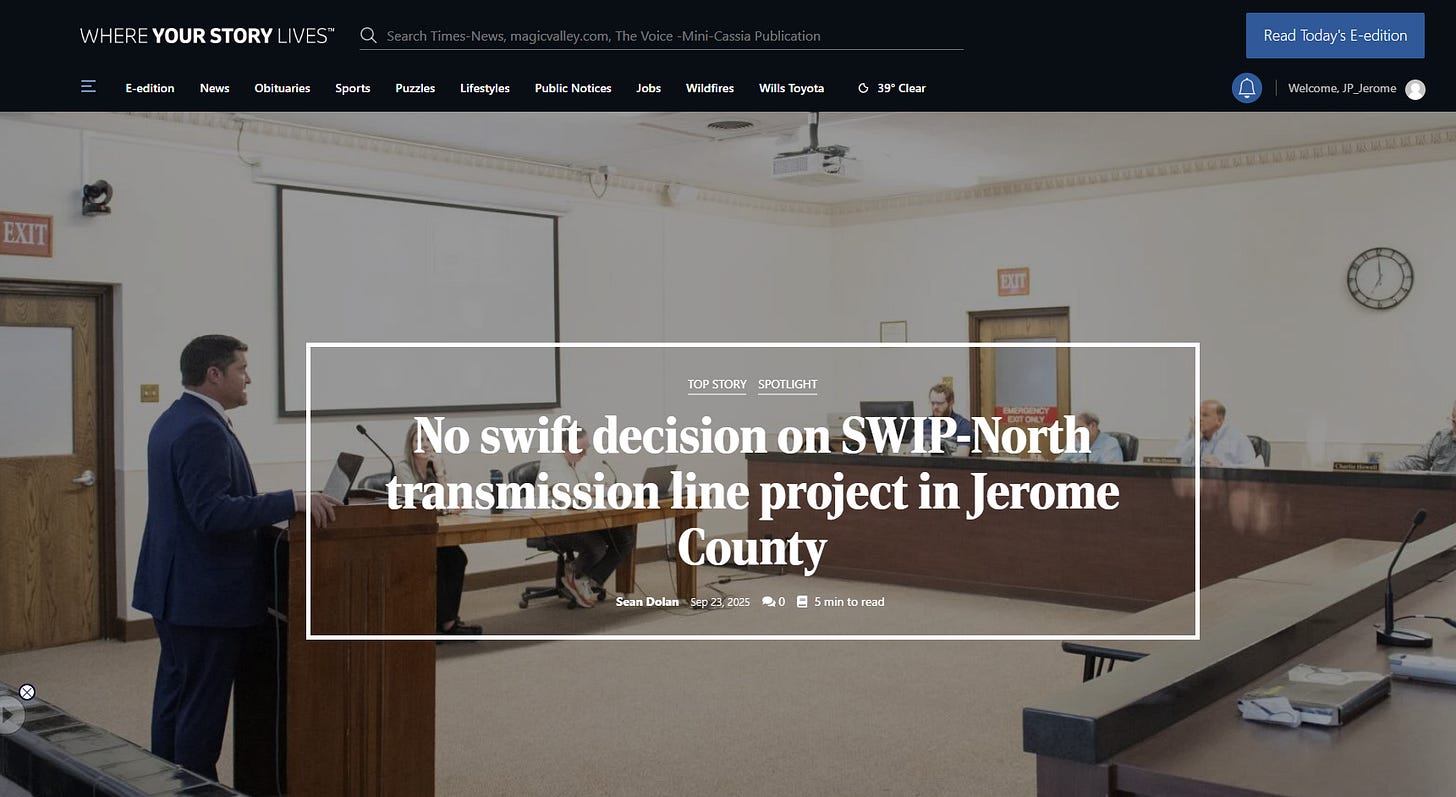Progress that harms the human spirit is not progress at all.
Is Idaho about to learn that lesson the hard way?
Communities Strained
When heavy industry moves into a small community, it does more than change the landscape. It changes how people see themselves. Roads fill with trucks, lights erase the night sky, and the sound of turbines or compressors replaces silence. The transformation is not only physical. It is psychological. It leaves a cultural aftershock that no reclamation plan can fix.
Across America’s interior, new forms of industrial expansion, from data centers to energy corridors, wind ranches, and solar complexes, are reshaping towns that were once steady and slow. The pattern has become clear. Economic shock comes first. Cultural dislocation follows. What begins as civic optimism often ends as fatigue, mistrust, and loss of identity.
In Williston, North Dakota, the oil boom promised opportunity. For a time it delivered it. Wages rose, hotels filled, and the town’s population nearly doubled. But so did rents, traffic, and violence. Many teachers left because they could no longer afford to live where they worked. Long-time residents described feeling like strangers in their own neighborhoods. One local pastor said, “We went from knowing everyone to knowing no one.”
Sociologists now call it community strain syndrome. It is the stress that emerges when a town’s population, culture, and infrastructure expand faster than its social bonds can adapt. The result is measurable: higher rates of anxiety, substance abuse, and domestic conflict. When local government becomes overwhelmed, the sense of belonging that once held the place together begins to break apart.
The same pattern appears wherever industrial projects arrive under the banner of progress. In Idaho, the state has watched farmland give way to transmission corridors and solar installations. Residents describe a quieter trauma, what one farmer called “the slow death of normal.” The view from his kitchen window used to be open fields. Soon, it will be rows of steel poles that hum in the wind.
Displacement is not always about relocation. Sometimes it is about alienation. When familiar landscapes vanish, people lose the sense of continuity that roots a community in time. Children grow up thinking power lines are part of nature. Elders lose the landmarks that once told their story. The change happens slowly enough to seem inevitable but fast enough to feel violent.
In Loudoun County, Virginia, home to the world’s largest concentration of data centers, residents have learned what invisible industry really means. The buildings are windowless and sealed, but their presence is everywhere, in substations, traffic, constant construction, and the unending drone of cooling fans. Rural roads now carry freight twenty-four hours a day. The sky glows white at midnight.

People describe a fatigue that is hard to name. It is not just anger about land use or tax policy. It is sensory exhaustion, the loss of quiet, of darkness, of rhythm. A farmer’s wife told a local reporter, “You can’t escape the hum anymore. It follows you into your sleep.” That single sentence captures the cost of technological ambition that planners never calculate.
Once a community begins to fracture, rebuilding trust becomes harder than fixing infrastructure. Residents who feel unheard stop showing up to meetings. Officials who feel defensive stop answering questions. Each side accuses the other of bad faith until silence replaces dialogue. This is how civic institutions die, one frustrated conversation at a time.
In every case, the cycle begins with exclusion. When projects are approved before citizens understand their scope, people feel deceived. When environmental reviews ignore social consequences, people feel disposable. The damage is moral as much as material. Trust, once lost, does not return through public relations campaigns. It returns through transparency and inclusion.
The Human Ledger
The true balance sheet of progress cannot be measured in megawatts or market capitalization. It is measured in stability, peace of mind, and belonging. When those collapse, the profit is meaningless.
Every place has a breaking point where growth becomes loss. The challenge of modern governance is to recognize that threshold before it is crossed. Williston reached it through oil. Loudoun County reached it through data. Southern Idaho is approaching it through energy expansion. Each tells the same story: when home stops feeling like home, no amount of tax revenue can buy it back.
Progress that harms the human spirit is not progress at all. It is a wound disguised as achievement.
Idaho’s Emerging Community Strain
A 2020 study in Sustainability (Powerless in a Western US Energy Town: Exploring Challenges to Socially Sustainable Rural Development ) documented how rapid industrial expansion in Western energy towns eroded local identity, trust, and ecology. The same pattern is now visible in Idaho.
As data centers, transmission corridors, and mega-projects replace farmland, counties face the same imbalance described in the study: growth without adaptation. Infrastructure lags, governance weakens, and residents experience community strain syndrome; the exhaustion that sets in when a region grows faster than its civic and ecological systems can bear.
Without strong local authority and full-cost accountability for industrial expansion, southern Idaho risks becoming what the study called “powerless,” a host for outside interests rather than a self-governing community.
Principles of Growth
Idaho stands at a turning point. Growth is no longer a question of if but of what kind. Every county, town, and valley now faces the same dilemma that has broken other communities: whether to let expansion dictate identity or to shape growth according to the values that built this place. These principles, grounded in liberty and property rights, exist to guide development through stewardship rather than speculation, ensuring that progress strengthens the community instead of consuming it.
Sovereignty of Scale
A community must govern the scale and pace of its own development. Growth that outpaces public consent or local capacity is not progress, it is displacement.Ecological Accountability
All growth must respect the limits of the land, water, and air that sustain it. Industrial projects must prove they can operate without degrading shared resources or shifting environmental costs to future generations.Civic Reciprocity
Development must strengthen the community that hosts it. Projects that erode public trust, divide residents, or weaken essential services violate the social contract that gives them legitimacy.Fiscal Integrity
Public resources exist for public good. No private enterprise should depend on hidden subsidies, cost shifting, or ratepayer burdens. Every dollar of public investment must yield measurable public return.Cultural Continuity
A region’s character—its quiet, rhythm, and sense of belonging—is a form of capital as real as land or infrastructure. Growth that destroys this inheritance impoverishes the community it claims to enrich.Duty of Scrutiny
Elected officials and citizens share a moral responsibility to question and verify the claims of any project that seeks public trust. Vigilance is not obstruction; it is the foundation of good governance.Adaptive Governance
Regulations must evolve as rapidly as the industries they oversee. Local ordinances should anticipate new technologies and industrial scales rather than react after harm occurs.
Will Idaho learn from the lessons of other regions of the country, or will elected officials repeat them, trading local sovereignty for temporary revenue and leaving citizens to bear the long-term costs? The measure of leadership will not be how quickly projects are approved, but how faithfully they preserve the human ledger: the stability, trust, and belonging that no balance sheet can record and no developer can restore once lost.
Idaho 20 / 200 Unrestrained Development Series, © 2025 Jeff A Pierson
Author’s Note
In the context of Idaho, 20/200 (legal blindness) refers to a system that still operates according to the forms of law but has lost its sight. Idaho’s land-use and economic statutes were built for an agricultural state, not one facing multinational-scale expansion. County and state officials continue to apply outdated frameworks to projects whose scale and impact exceed their legal field of vision. This is not corruption but incapacity, a blindness born of narrow jurisdiction, obsolete statutes, and misplaced confidence in procedure. Officials are also blindly accepting the promises of jobs and prosperity when studies show those benefits often fail to materialize. It is an economic development plan for the twentieth century being used to justify twenty-first century exploitation. The law remains intact, yet it no longer perceives the reality it governs.
Related
#Idaho20200 #Jerome 20/20 #Jerome20/20 #CommunitiesStrained #LegalBlindness #IndustrialExpansion #LandUseReform #RuralIdentity #EnergyCorridors #DataCenterImpact #SouthernIdaho #EconomicSovereignty #CivicAccountability #OrderedLiberty #LocalControl #SustainableGrowth #ProtectFarmland #PublicTrust #TransparentGovernance #GrowthWithoutConsent #ModernColonialism #HumanLedger
© 2025 Jeff A Pierson









